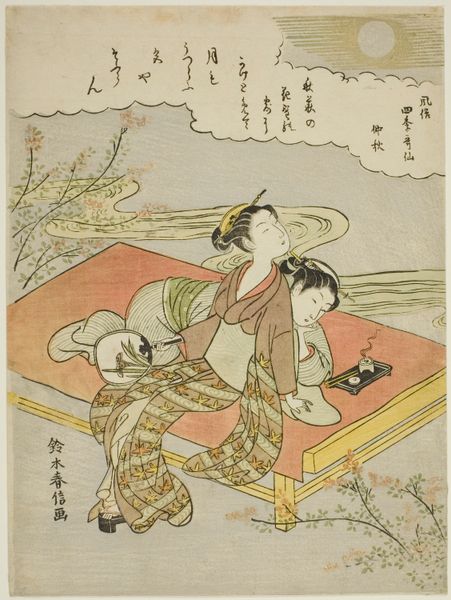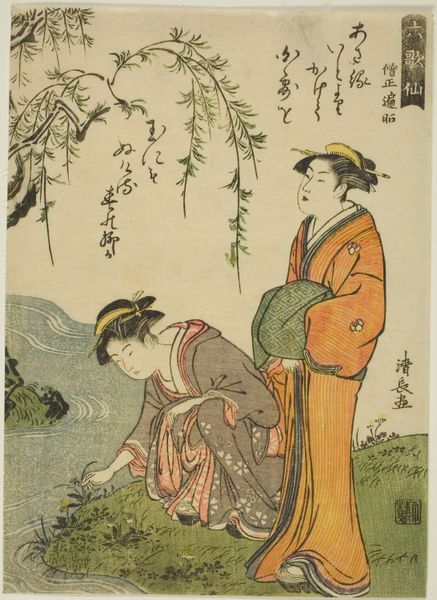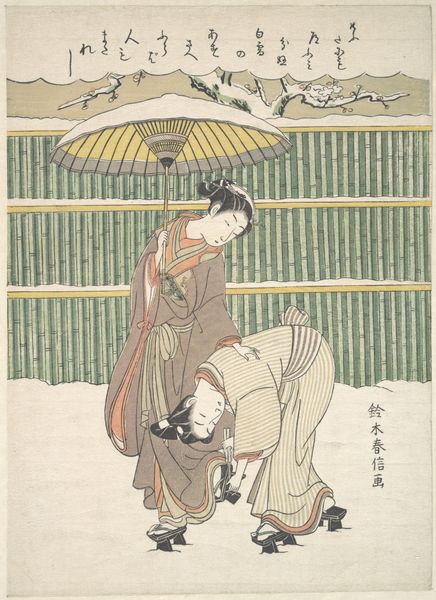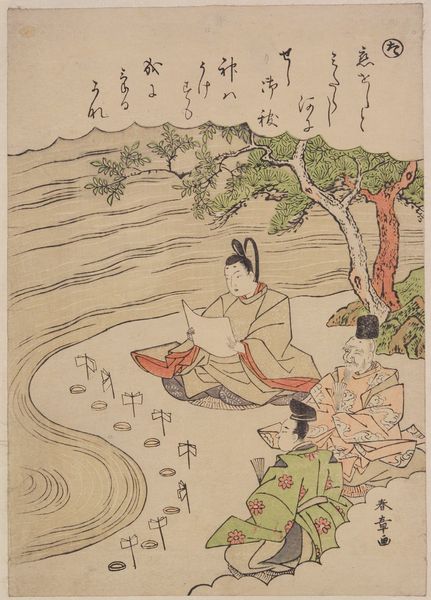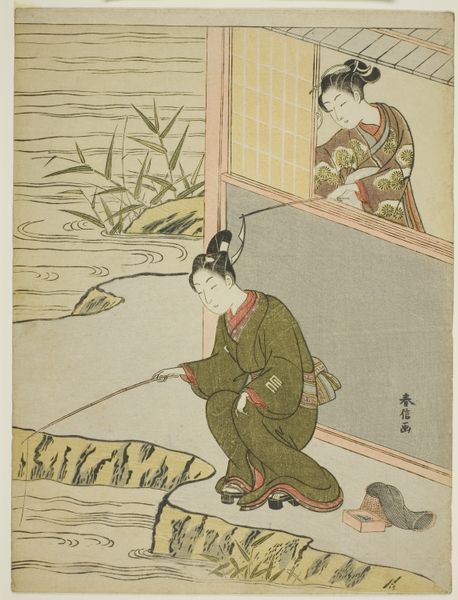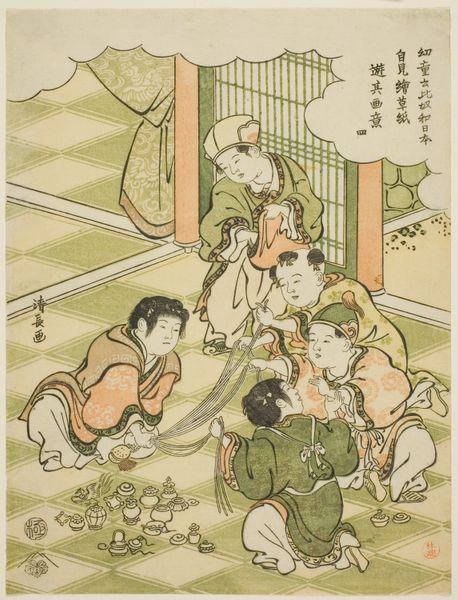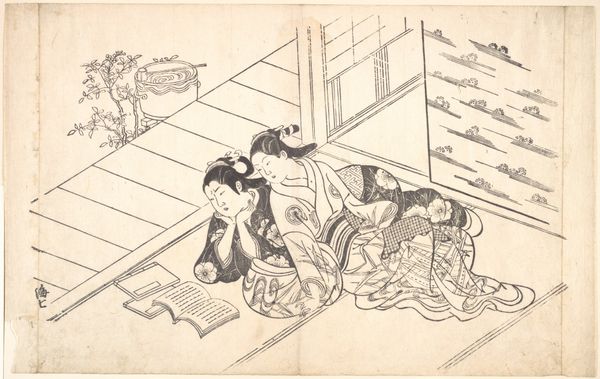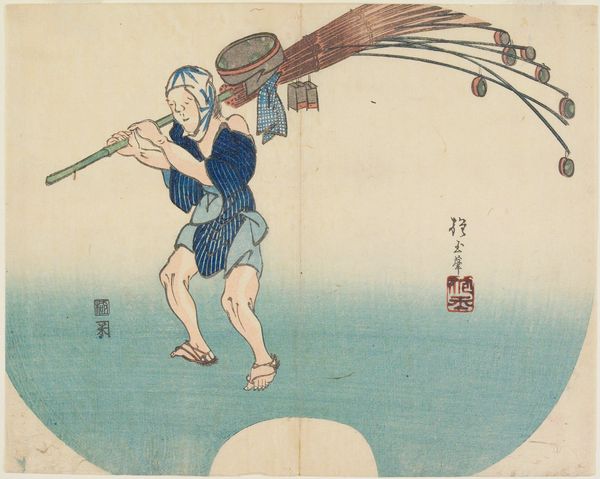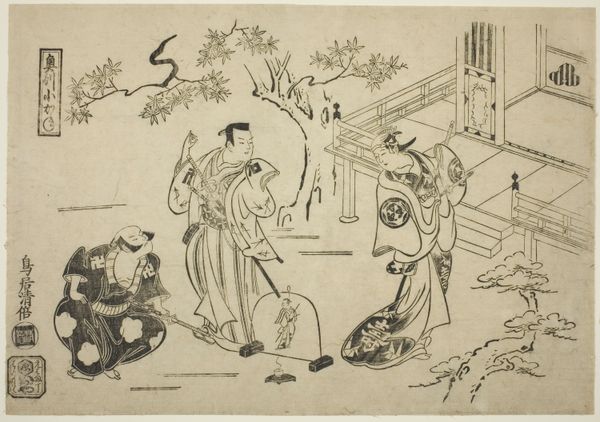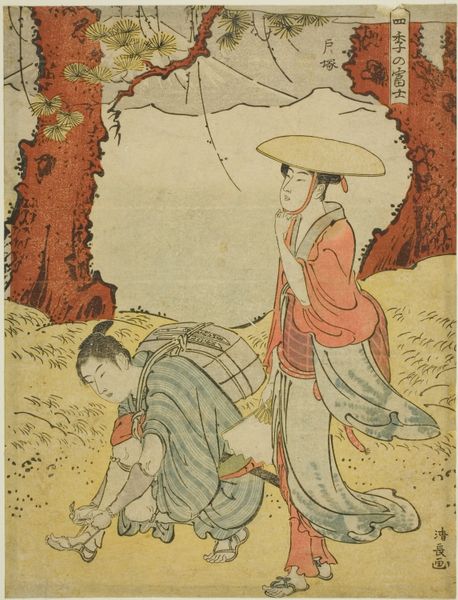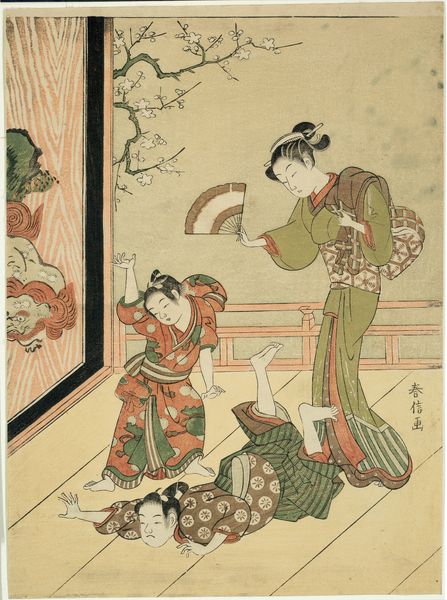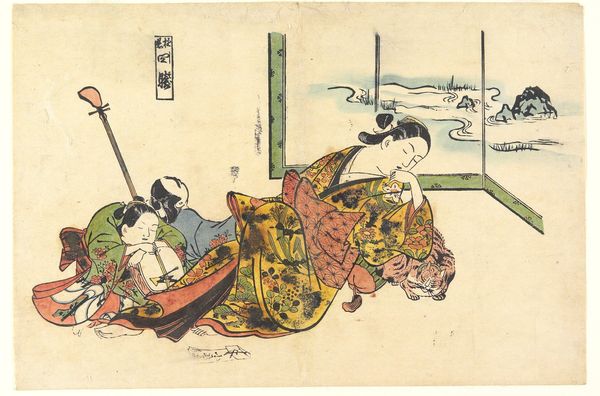
print, ink
# print
#
ukiyo-e
#
japan
#
figuration
#
ink
#
watercolour illustration
#
genre-painting
Dimensions: 9 3/16 × 11 9/16 in. (23.4 × 29.4 cm) (image, sheet, uchiwa-e)
Copyright: Public Domain
Curator: This print, dating back to the 1830s, is called "Repairing Boats," by Yamada Hōgyoku. It resides here at the Minneapolis Institute of Art. It’s crafted using ink and print techniques. What catches your eye about this ukiyo-e genre scene? Editor: It feels grounded. The circular shape enclosing the figures, mimicking the boat itself, and the pale, muted colors give it an intimate, almost meditative quality. There’s a real sense of lived experience here. Curator: Absolutely. That circular composition – you’re right – really emphasizes their enclosed workspace, which could represent the safe, reliable nature of what the sea provides to them. Ukiyo-e prints, "pictures of the floating world," were incredibly popular, depicting everyday life, landscapes, and popular culture. You see a boat's cross-section rendered with care, but what I always wonder is whether Hōgyoku worked on or around boats like these. The seated craftsman there, it all seems from real observation. Editor: He does appear quite comfortable, but the way he’s seated, almost cross-legged, it also feels reminiscent of a monk in meditation. Does that ring a bell? There’s a peaceful rhythm, isn't there, to repetitive labor, that becomes akin to prayer. Then notice, a nail wedged in the corner of his mouth... ouch! He must have hands that steady like the masts on these boats! Curator: Exactly! Perhaps a testament to the inherent symbolism woven into ordinary activities and the working man? It all serves as a kind of meditative study, don't you think? You know, I am sure most of those purchasing and keeping these works would be living similar lives, too. They might be looking back, not at some king or dignitary, but a normal person as worthy of such memorializing! I wonder about our view today and this print. Editor: That's profound, because we view this today in terms of the legacy it built into artistic production for centuries and as something high-minded, while it was, in fact, common and sentimental. That helps to think of images differently. Curator: Indeed. Yamada Hōgyoku’s ability to capture a quiet, transient moment really invites us to contemplate the value we place in the commonplace. Editor: I think this piece reminds me of a certain truth: we should find the extraordinary within our ordinary selves. Thanks.
Comments
No comments
Be the first to comment and join the conversation on the ultimate creative platform.
